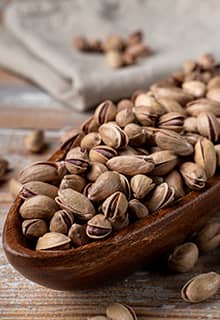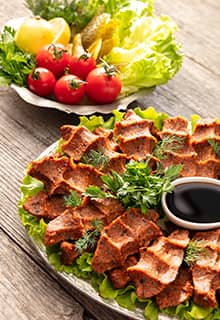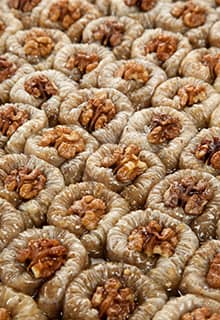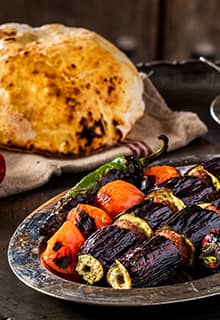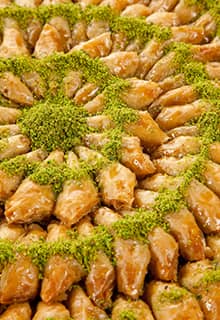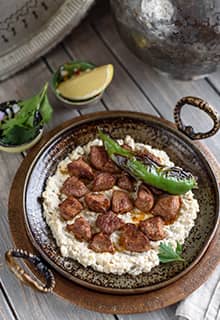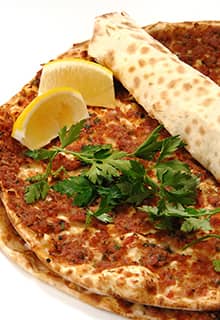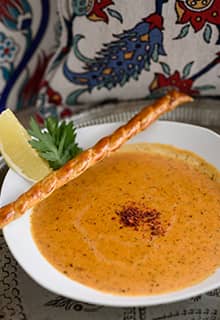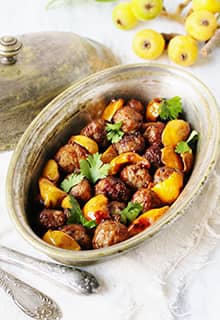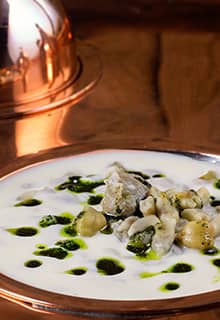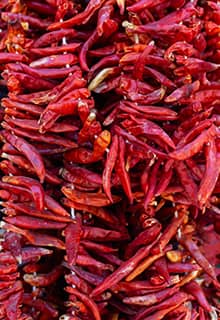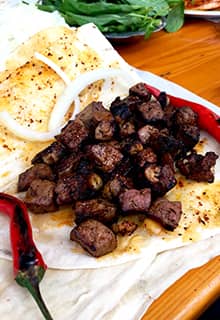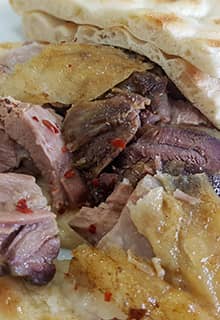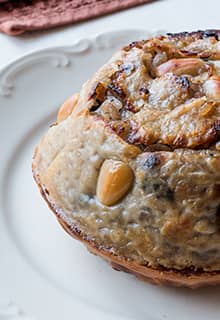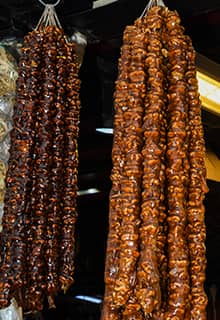

taste
South Eastern Türkiye
Baklava in Gaziantep
The ancient Anatolian city of Antep, today known as Gaziantep, is Türkiye's gastronomical capital famous for being home to the world’s finest pistachios and the delicious Baklava.
Baklava was traditionally prepared for Eid-al-Fitr, also known in Türkiye as Ramazan or Şeker Bayramı, a religious holiday when Muslims celebrate the ending of Ramadan, the Islamic holy month of fasting. Today, this Turkish treat is available year-round, and with more than 500 baklava bakeries in the city of Gaziantep, it is not to be missed, especially during the pistachio harvest from midsummer to September, when these emerald-coloured nuts are just the right size for baklava.
To make this popular pastry, the finely crushed, genuine Gaziantep pistachios are generously spread between paper-thin sheets of filo pastry which are brushed with melted butter and smeared with semolina cream. Antep baklava is then splashed with another dose of melted butter, baked, and finally, a hot sugar and lemon juice syrup is poured over.Çiğköfte in Adıyaman.
We can say that most of the cities in the Southeastern have a tradition of çiğköfte. However, it is also possible to say that the most well-known one is Adıyaman’s çiğköfte.
Çiğ köfte is the Turkish version of steak tartare, traditionally made with high-quality ground raw beef (or lamb) that is combined with bulgur, tomato paste, onions, garlic, pepper, and a selection of Turkish spices. The dish is consumed as a meze, and it is typically served almost cold.In recent years, due to food safety regulations and health concerns, the meat is nowadays almost always replaced with bulgur and ground walnuts, but these vegetarian versions are so good that people mostly cannot tell them from the real thing.
Lahmacun in Şanlıurfa
Lahmacun, one of Türkiye’s most loved dishes, is made with unfermented dough, onions and plenty of spices in Şanlıurfa. The spicy taste of lahmacun is comes from the unique isot pepper of Şanlıurfa. You can smell the delicious lahmacun from wood ovens in almost every street in Şanlıurfa. Ayran, made with sheep yoghurt, and fresh greens of Şanlıurfa accompany the lahmacun.
Mumbar Dolması (Stuffed Intestines) in Batman
If you like the flavors made with offal, you may also like the Batman-style Mumbar Dolması in Batman's regional cuisine. Mumbar Dolması, prepared differentlu in each region, is made from the intestines of sheep, cattle or goats in Batman. Mumbar Dolması is served after cooking in the pot.
Büryan Kebab in Siirt
Made in many parts of Türkiye, Büryan is Siirt’s traditional meat dish. Büryan is made by cooking the whole lamb (with its organs removed, with wood fire, in a well with mud about 2-3 meters deep and the lid closed. Büryan is usually a meat dish consumed in summer.
Mırra Coffee with Almond Candies in Mardin
Mırra is one of the strongest coffees of the world and is labor intensive as it requires to be brewed a few times. Known also as The Master’s Coffee, mırra is consumed on special days from small cups with no grips.
Mardin’s Almond Candies differ from the classic almond candies with its taste and color as they are produced using local almonds, coated with sugar dyed in blue with herbal dyes from the Lahor tree.
Watermelon in Diyarbakır
This will be the most delicious watermelon you can taste!
This Diyarbakır watermelon, additionally picking up in ubiquity, as they are perfect for send out in view of their size and imperviousness to bugs. After reaping, they can be kept for longer duration without getting degenerated, giving a long trade time.
Watermelon juice protects the liver; kidney and mind tissues from CCl4 poisonous material and this defensive impact of watermelon juice might be because of its cell reinforcement movement and restraint of lipid peroxide development.
Meat Dishes in Şırnak
Meat is the most important ingredient of Şırnak cuisine. The reason for this is that the most important income source of the majority of Şırnak people is livestock. Therefore, the people of Şırnak attach great importante to meat dishes. The waiting time of the meat and the cutting of the meat are important for Şırnak cuisine.

